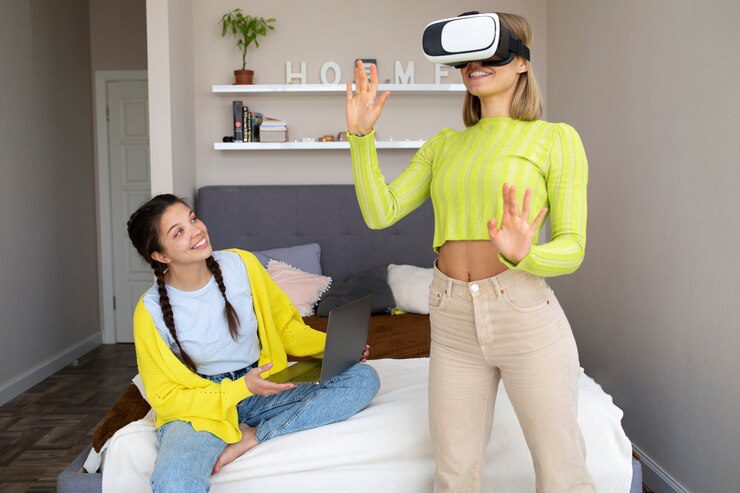Remember the clunky keyboards and dial-up connections of the early internet? Yeah, those days are as retro as a flip phone. The way we interact with technology is constantly evolving, and the next big leap is here: the metaverse. It’s not just a fancy sci-fi term anymore; the metaverse is poised to revolutionize the way we work, play, and even socialize. So, ditch the outdated and buckle up for a mind-blowing exploration of this new way to interact with technology.
The Metaverse: Beyond the Screen and Into a Virtual Universe
Imagine a world where the physical and digital seamlessly collide. That’s the essence of the metaverse. It’s a network of interconnected virtual experiences accessed through cutting-edge technologies like VR headsets and augmented reality (AR) glasses. Think of it as the ultimate upgrade from scrolling through your phone – you’ll be interacting with technology in a whole new dimension. Technology interaction shapes our daily lives, influencing how we communicate, work, and navigate the world around us.
Breaking the Chains of the Screen
The metaverse promises a revolution in the way to interact with technology. Here’s a glimpse into what the future holds:
Work Reimagined: Imagine attending meetings in a virtual conference room with colleagues from around the world, complete with 3D avatars and interactive whiteboards. The metaverse could transform remote work into a truly collaborative experience.
Learning Goes Lit: Picture exploring the ancient pyramids in virtual reality or dissecting a frog in a 3D biology class. The metaverse has the potential to make learning more immersive, engaging, and accessible than ever before.
Socializing Gets a Makeover: Forget awkward video calls – the metaverse could allow you to hang out with friends in virtual cafes, attend concerts with a global audience, or explore exotic locations together – all from the comfort of your living room (or wherever you choose to log in from).
Entertainment Evolved: Get ready to ditch the popcorn and settle into your VR headset. The metaverse promises a whole new level of interactive entertainment, from exploring virtual theme parks to attending live concerts with holographic performers.
Beyond the Glitz: The Potential Benefits of the Metaverse
The metaverse isn’t just about flashy visuals and virtual hangouts. Here are some potential benefits to consider:
Accessibility for All: The metaverse could open up new avenues for people with disabilities to interact with the world and participate in activities that might be challenging in the physical world.
Boosting Creativity and Collaboration: The immersive nature of the metaverse could foster unparalleled levels of creativity and collaboration across different fields.
A New Frontier for Education: Imagine learning history by walking through virtual recreations of historic events or practicing surgery in a safe, simulated environment. The possibilities for education in the metaverse are endless.
Challenges and Considerations
While the metaverse is exciting, there are challenges to address:
Tech Hurdles: Current VR and AR technology can be expensive, bulky, and not always user-friendly. For the metaverse to become mainstream, these technologies need to become more affordable and accessible.
Privacy Concerns: The integration of the physical and digital worlds raises significant privacy concerns. Clear regulations and ethical considerations are crucial for responsible metaverse development.
The Social Impact: Will the metaverse lead to increased social isolation or a decline in real-world interactions? Finding a balance between the virtual and physical worlds will be key.
Conclusion
The metaverse is more than just a new platform; it’s a new way to interact with technology that promises to reshape how we live, work, and play. It’s still early days, but the potential of the metaverse is undeniable. So, keep an eye on this evolving technology, and get ready to dive headfirst (or should we say, headset first?) into this exciting new frontier. The future of interaction is here, and it’s not confined to the limitations of a screen.







